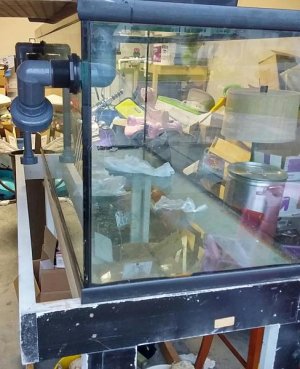sleepydoc
Team RC
I'm looking at purchasing a new tank - 156g - that has some kind of Herbie system on it. It has a 1 1/2" bulkhead at each side of the back, 3" down from the top, and a single 1" return in the middle of the back.
It doesn't have an overflow box of any kind, so I'll plan on adding a glass coast to coast all the way along the back.
Hoping the pic attachment works.
Any suggestions on where to drill the 3rd 1 1/2" bulkhead?
Is there any problem with the return where it is?
cheers!
Why do you need a 3rd bulkhead, and why 1.5"? Easiest way to do the return is up over the top. That way you can make your overflow with two straight pieces of glass.




